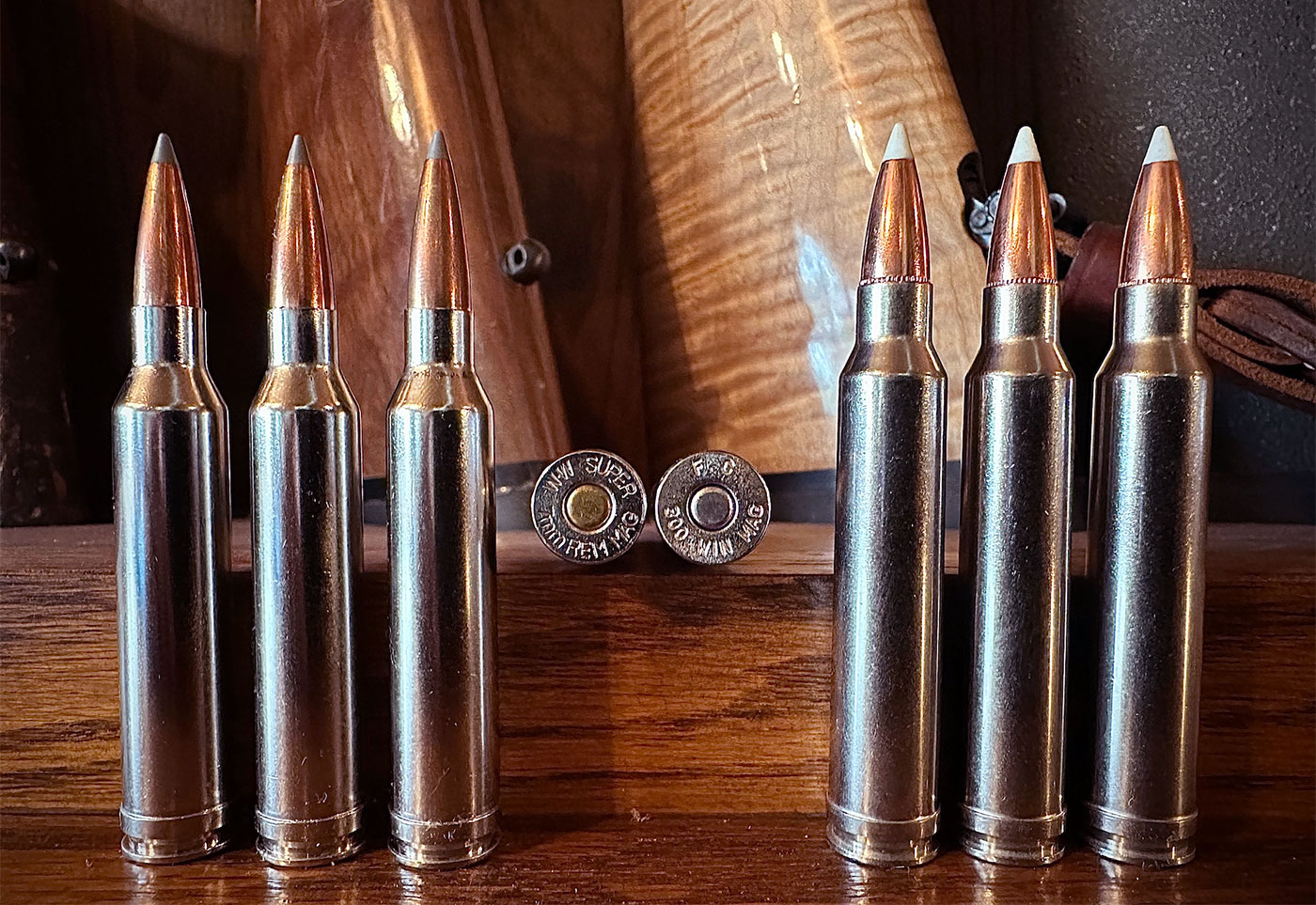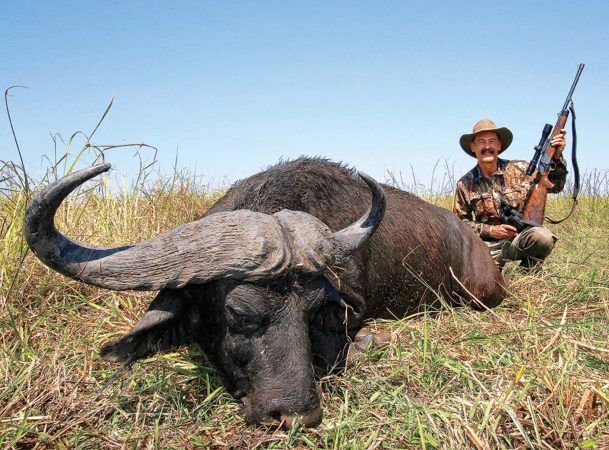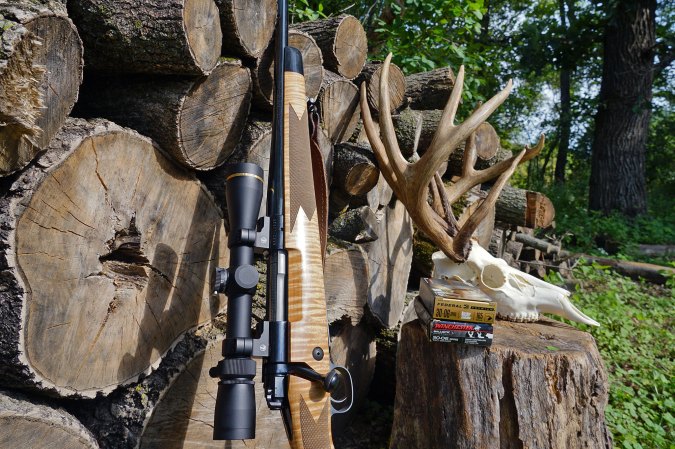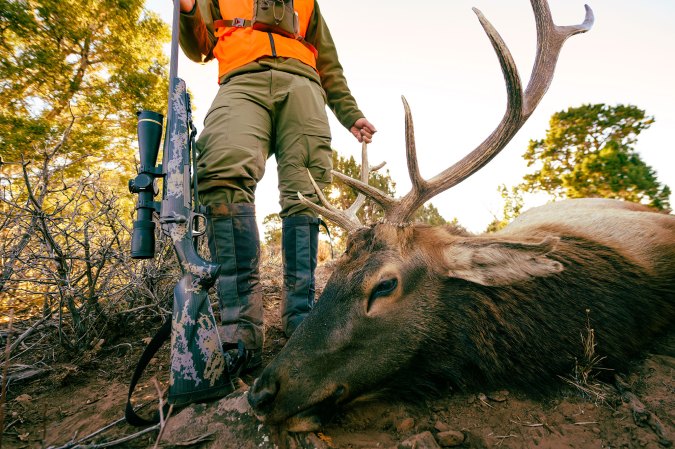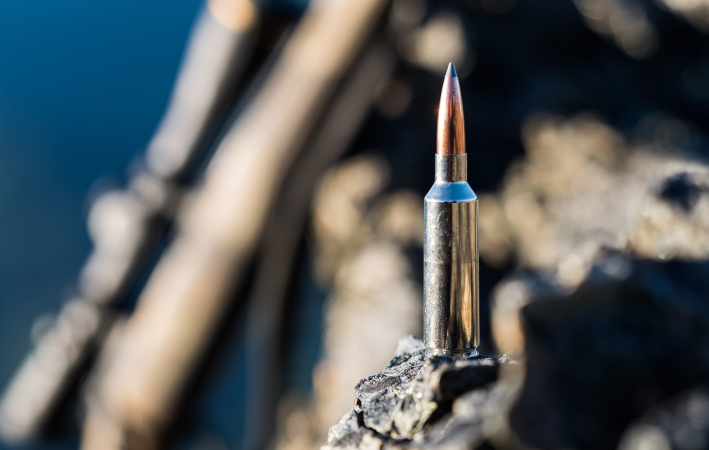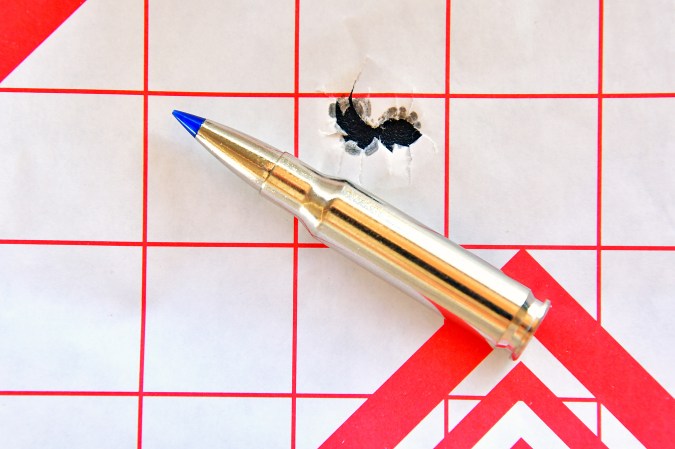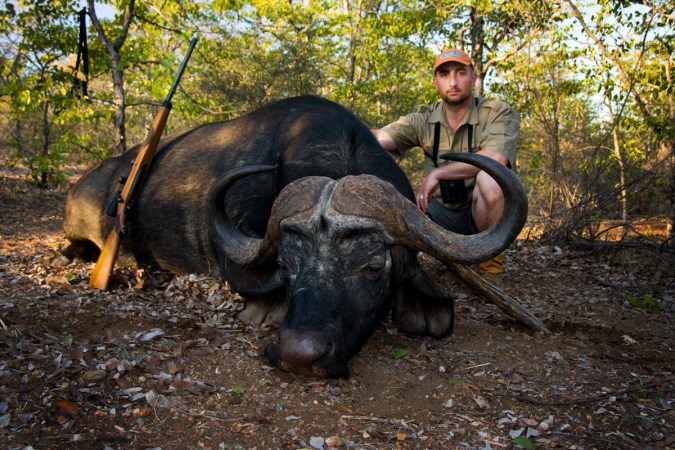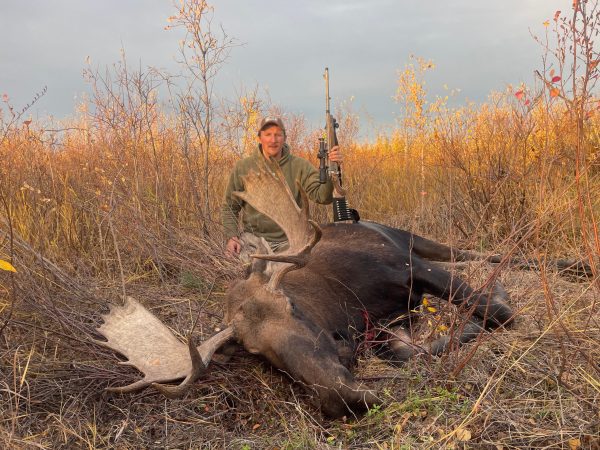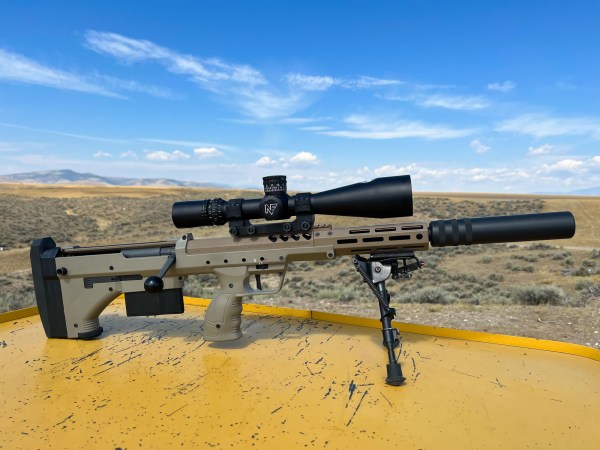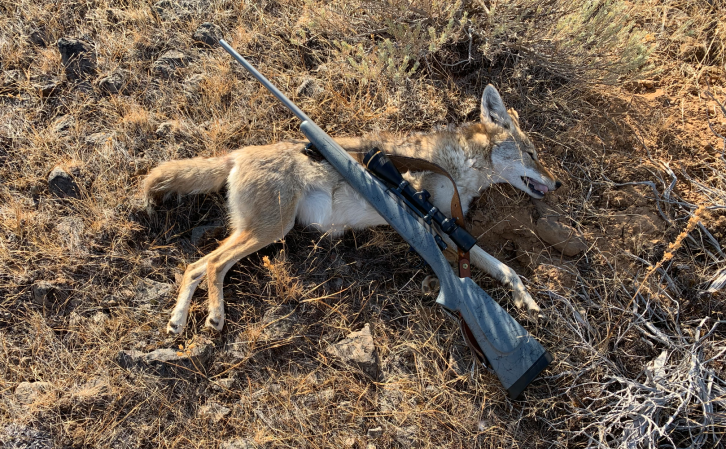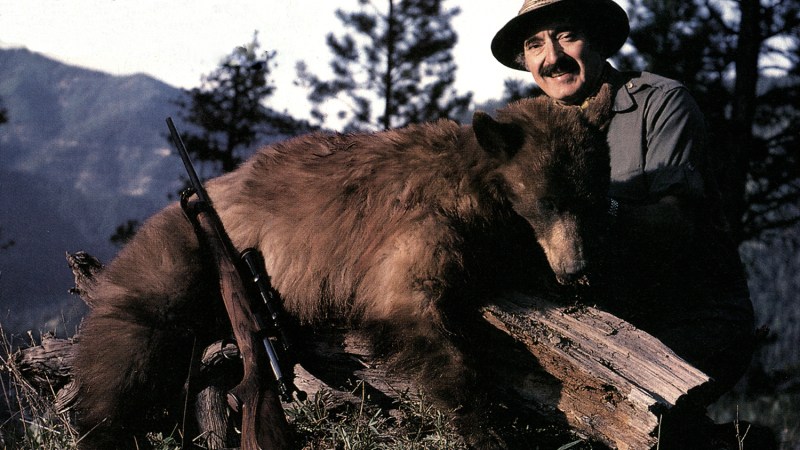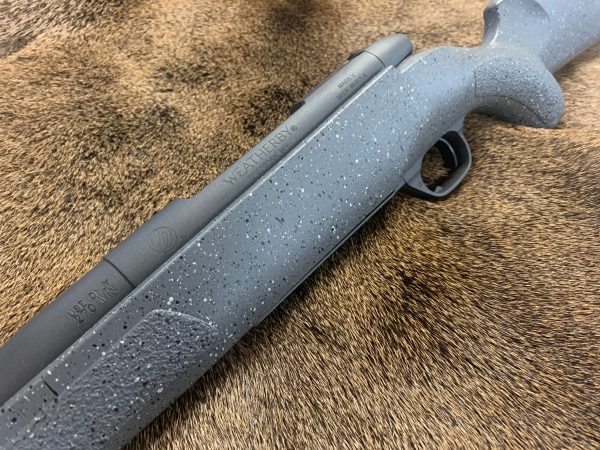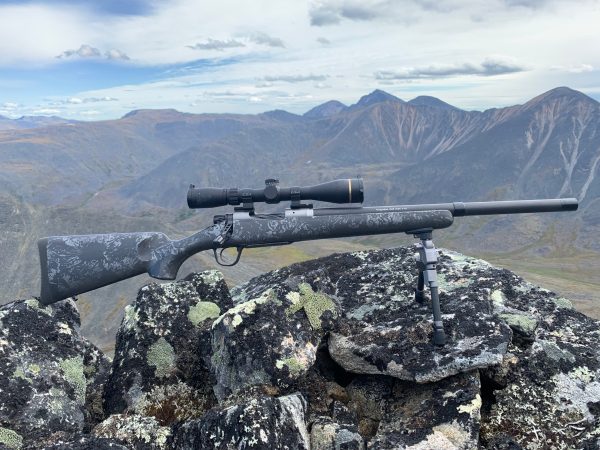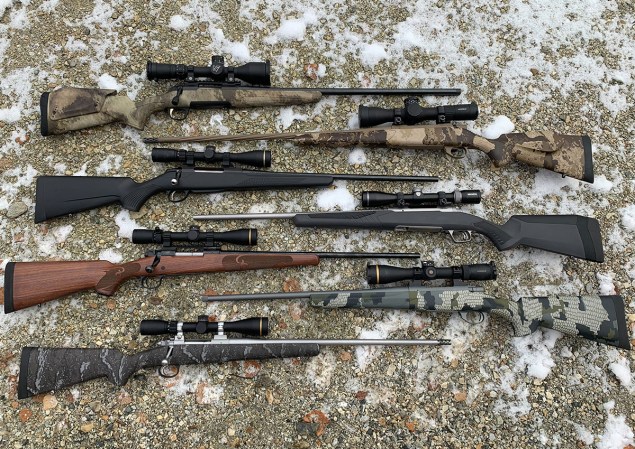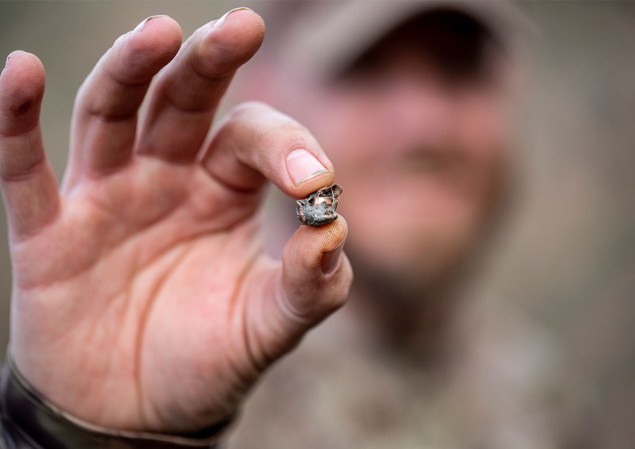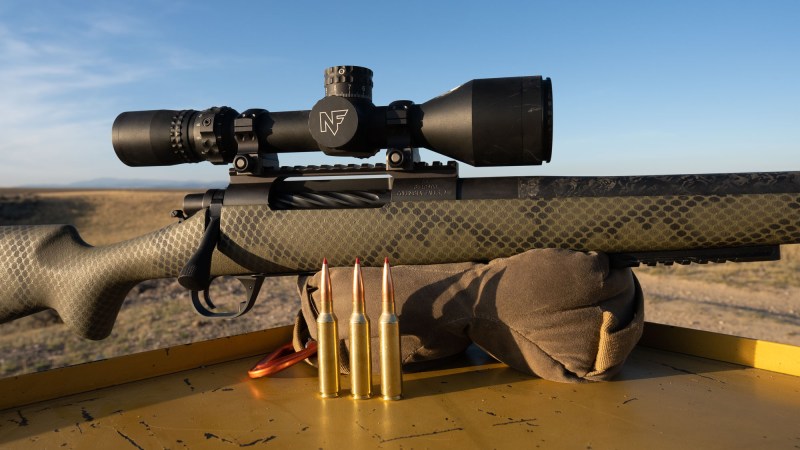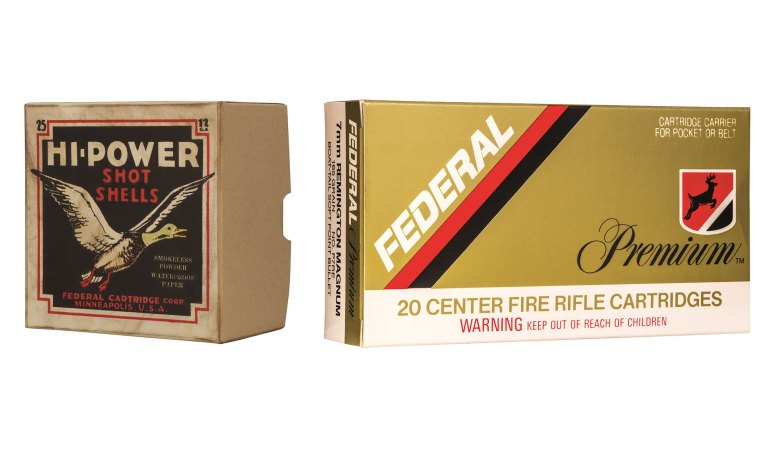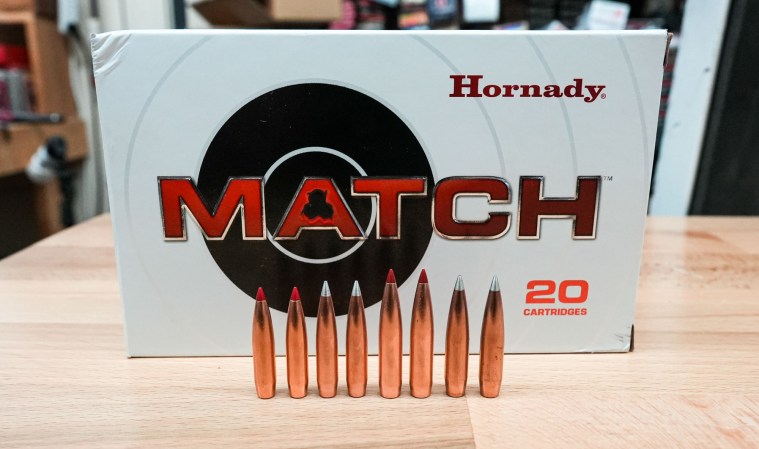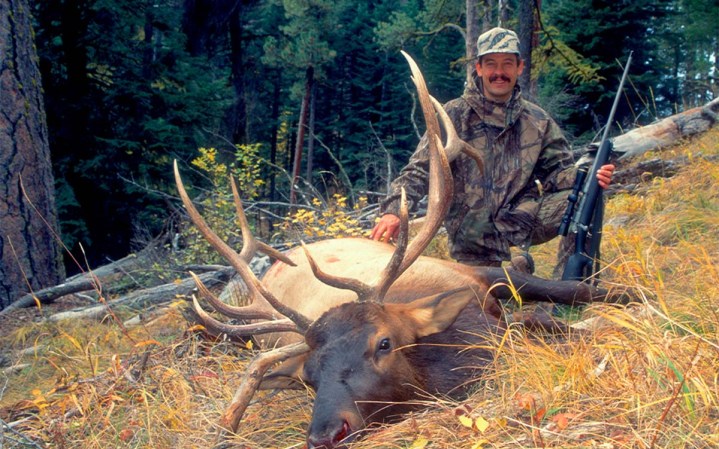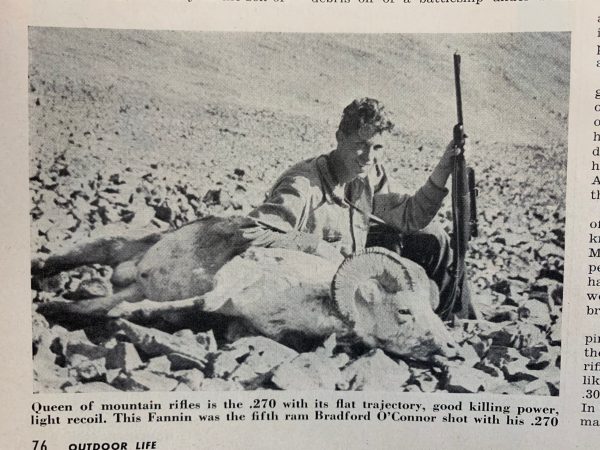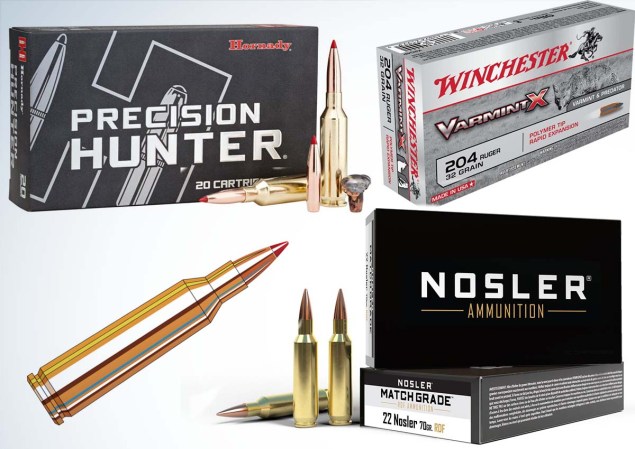We may earn revenue from the products available on this page and participate in affiliate programs. Learn More ›
For cartridge connoisseurs, the early 1960s was a monumental time period with the launch of two of the most successful big-game cartridges of our time, the 7mm Remington Magnum and .300 Winchester Magnum. Naturally, the two cartridges have been pitted against each other since their inception. Sixty years later, each cartridge has rightfully amassed a loyal following. So what are the important factors when comparing the 7mm Rem Mag vs .300 Win Mag?
Both cartridges are long-action magnum cartridges capable of taking all of North America’s big game. Both offer a wide variety of bullet weights and configurations. There are also a wide variety of rifles chambered in each. Put plainly, the two cartridges are similar, but the .300 Win Mag is capable of using heavier bullets while the 7mm Rem Mag produces less felt recoil.
Both cartridges exhibit certain strengths and weaknesses when you start to nitpick. Depending on your hunting aspirations, one may fit your needs better than the other.
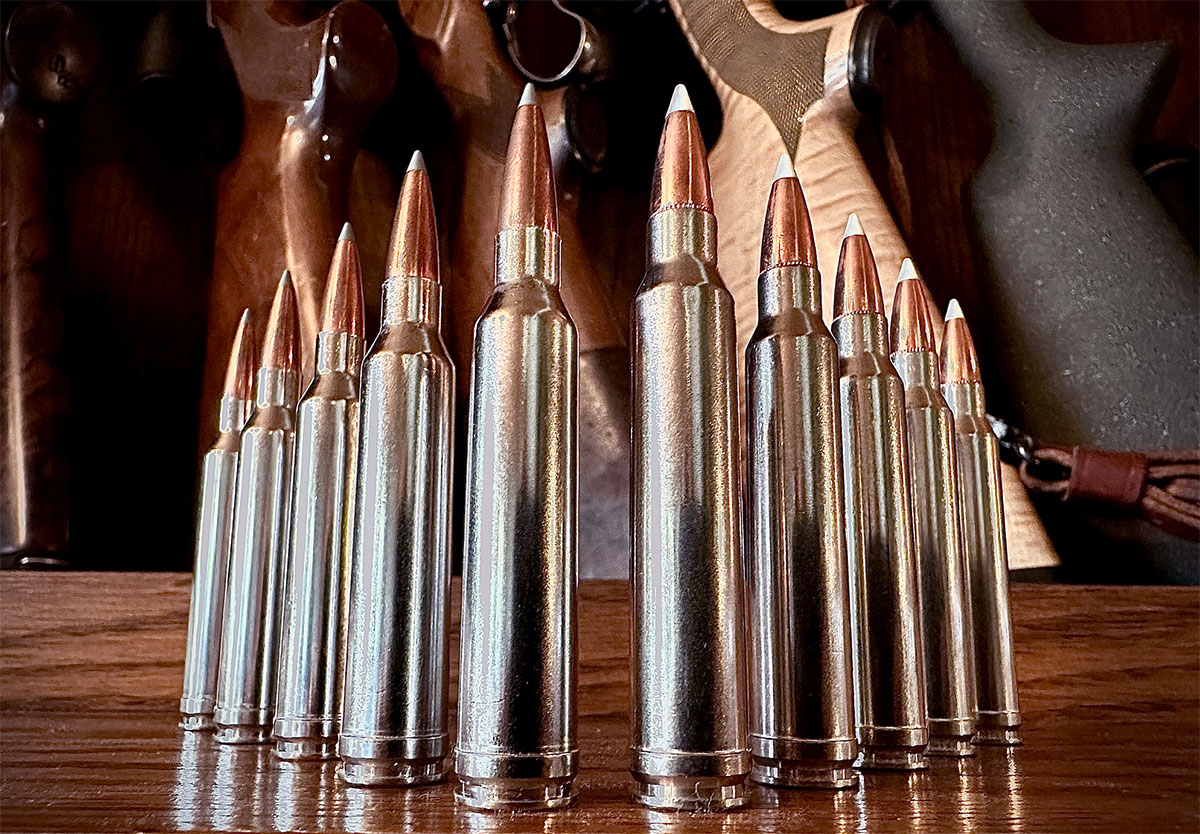
7mm Remington Magnum Specs
- Bullet Diameter: .284 inches
- Case Length: 2.5 inches
- Overall Length: 3.29 inches
- Parent Case: .375 H&H
.300 Winchester Magnum Specs
- Bullet Diameter: .308 inches
- Case Length: 2.62 inches
- Overall Length: 3.34 inches
- Parent Case: .375 H&H
History
7mm Remington Magnum
Many new cartridges come in hot and then fade with time. That’s not the case with the 7mm Rem Mag. Besides its flat-shooting and hard-hitting capabilities, the 7mm Remington Magnum owes much of its initial success to its launch coinciding with Remington’s introduction of the Model 700 rifle in 1962. The Model 700 is one of the most popular hunting rifles in history and the 7mm Remington Magnum rode its popularity upon introduction.
The 7mm Rem Mag’s parent case is the venerable .375 H&H shortened and necked down to accommodate a .284 caliber bullet and fit in a standard-length rifle action. At the time of its introduction, the .30/06 Springfield was the standard all cartridges were compared against. The 7mm Rem Mag is ballistically superior to the .30/06 in every category and the new cartridge was an instant success. Since then, the 7mm Rem Mag has become one of the most popular big-game cartridges of modern time.
.300 Winchester Magnum
Following the success of the 7mm Rem Mag, Winchester followed suit with its own magnum, introducing the .300 Win Mag just a year later in 1963. Like the 7mm Rem Mag, the .300 Win Mag uses the .375 H&H case, shortened and necked down to fire .308 caliber projectiles. Thanks to the larger case capacity, the .300 Win Mag delivers both a flatter trajectory and noticeably more energy down range when compared to the 30/06.
Winchester wisely offered the new cartridge in the popular Model 70 rifle, and the .300 Win Mag took off in popularity as well. Within a few short years most major ammunition manufacturers were producing .300 Win Mag ammo and they still are today.
Ballistics
Ballistically speaking, the 7mm. Rem Mag and .300 Win Mag are much closer than their loyal fan bases would like to admit. Given that they both derive from the same parent case, both cartridges feature similar case capacity and have some overlap in bullet weight selection. Here’s how they stack up with a few popular loads.
150-Grain Federal Power-Shok
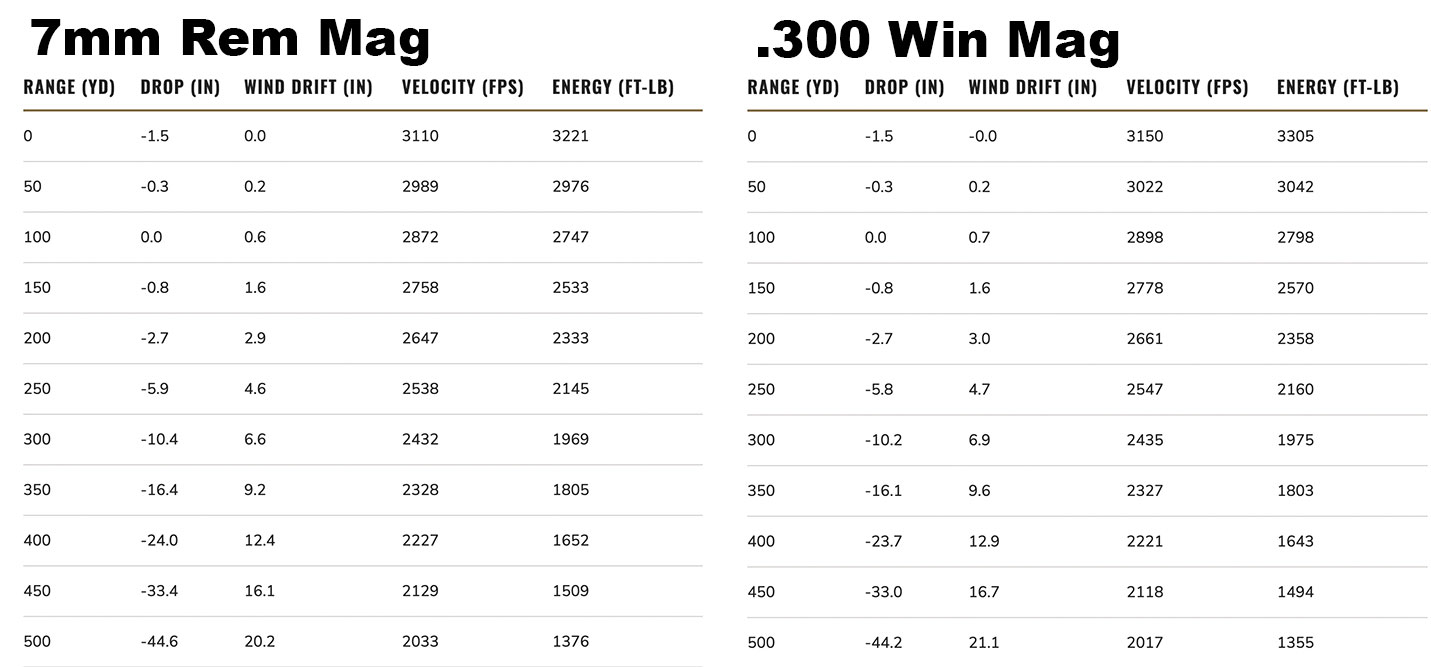
To prove their similarities, the first comparison I pulled was Federal Premium’s 150-grain Power-Shok ammunition, as Federal loads this same bullet for both cartridges.
7mm Remington Magnum
- Muzzle Velocity: 3,110 fps
- Energy @300 yds: 1,969 ft-lb
- Drop @300 yds: 10.4 inches
.300 Winchester Magnum
- Muzzle Velocity: 3,150 fps
- Energy @300 yds: 1,975 ft-lb
- Drop @300 yds: 10.2 inches
Yes, the .300 Win Mag does have a mouse hair of an advantage in this comparison, but the numbers are so close that the difference is negligible.
Heavy-for-Caliber Bullets
One advantage the .300 Win Mag has over the 7mm Rem Mag is its ability to shoot heavier projectiles. Popular bullet weights for the .300 range from 150- to- 200-grains while common bullet weights for the 7mm Rem Mag range between 140- and- 175-grains. Bigger may sound better but that is not always the case. Ballistic coefficient and sectional density of a bullet both play a factor in their ballistic and terminal performance. Given the same weight projectile, .284 bullets will typically have both a higher B.C. and sectional density than .308 caliber bullets of equal weight, resulting in better penetration despite the smaller diameter bullet.
So now let’s compare a “heavy-for-caliber” offering from both cartridges. For the 7mm Rem Mag, I stuck with the “Big Green” train and selected Remington’s 175-grain Core-Lokts. For the .300 Win Mag, I pulled data for Hornady’s 200-grain ELD-X loaded in their Precision Hunter line.
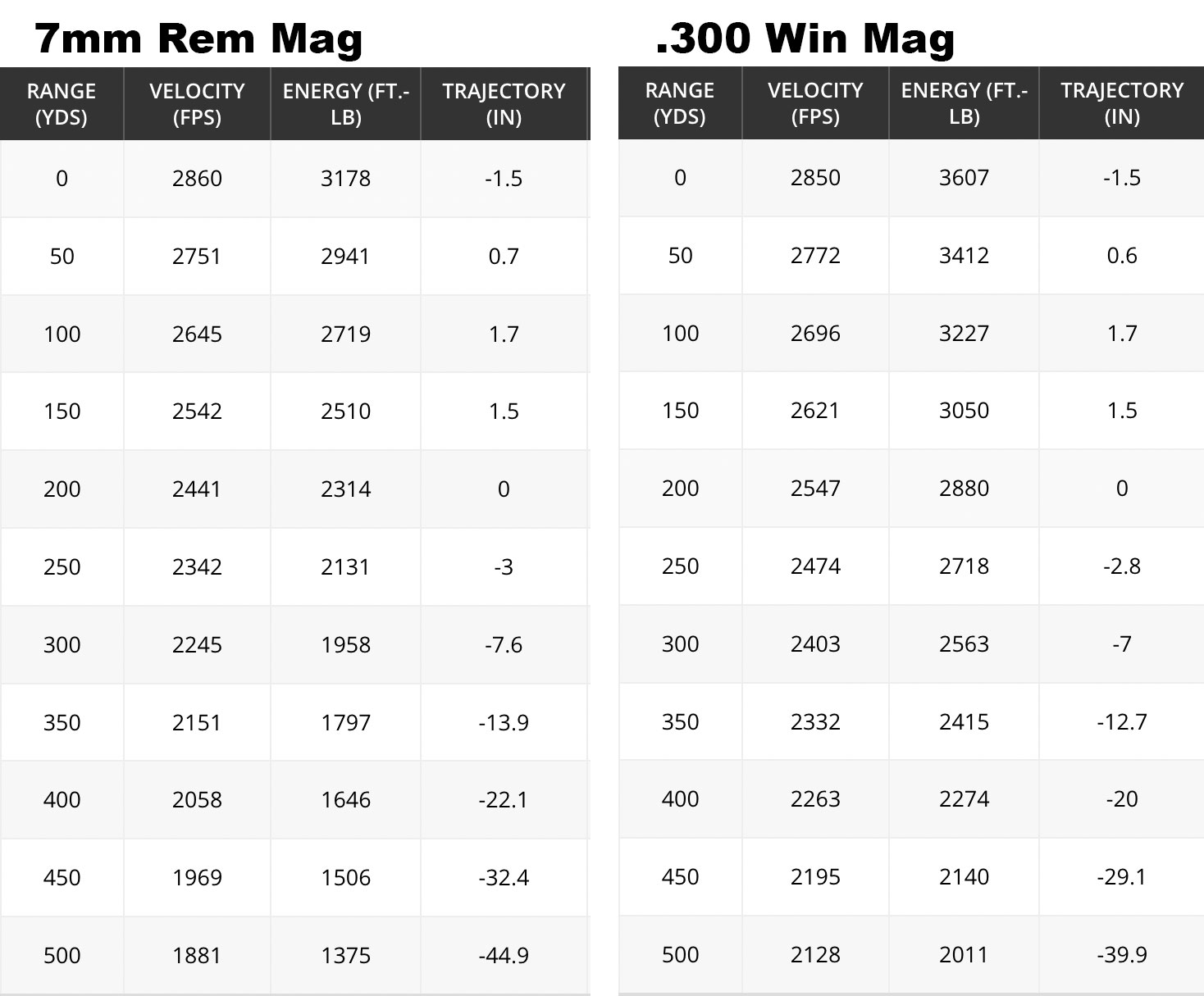
7mm Rem Mag, 175-grains
- Muzzle Velocity: 2,860 fps
- Energy @300 yds: 1,958 ft-lb
- Drop @300 yds: 7.6 inches (200-yard zero)
.300 Win Mag, 200-grains
- Muzzle Velocity: 2,850 fps
- Energy @300 yds: 2,563 ft-lb
- Drop @300 yds: 7 inches (200-yard zero)
Obviously, the heavier bullet fired from the .300 Win Mag generates substantially more downrange energy. However, the difference in bullet drop between the two is nominal. Plus, the 1,958 ft-lbs of energy that the 175-grain Core-Lokt transfers at 300 yards will still deliver ample energy to take down a rut crazed bull elk with authority.
Ballistically speaking, the two cartridges are very similar when shooting the same weight projectiles. Although, there is no refuting the substantial additional energy that the .300 Win Mag produces when shooting heavier bullets.
READ NEXT: Best Elk Hunting Calibers
Recoil
Both of the cartridges deliver stout recoil. Determining the exact amount of felt recoil of the two cartridges is difficult given the many variables like rifle weight, powder charge, and bullet weight. However, it is a given that the .300 Win Mag generates more recoil than the 7mm Rem Mag. On average, the 7mm Rem Mag produces about 24 ft-lbs of recoil. The .300 Win Mag produces about 30 ft-lbs of recoil, roughly 20 percent more. For reference, a .270 Winchester generates about 20 foot-pounds of recoil.
For some, recoil can be a deal breaker. For others, it’s a small part of the equation. No matter where you stand, the lighter recoil of the 7mm Rem Mag gives it the edge in terms of comfort and shootability.
Adding a muzzle brake or suppressor to a rifle chambered in either of these cartridges will help reduce felt recoil.
Accuracy

Determining an accuracy winner between the two cartridges is nearly impossible. Both the 7mm Rem Mag and .300 Win Mag contain the ability to deliver impressive accuracy results. I have owned and shot rifles chambered in both of these cartridges that consistently produced sub-MOA results. Personally, I had a .300 Win Mag that could pop 1-gallon milk jugs at 1,000 yards with regularity. It may take some tinkering with various loads to find the sweet spot for your particular rifle, but rest assured both cartridges are accurate.
However you, the rifleman, must be able to shoot these hard recoiling cartridges accurately. Even if you’re a tough guy, it’s a challenge to shoot large magnum cartridges with consistent accuracy. In other words, selecting one of these two boomers for your first hunting rifle is probably not a wise choice.
As Jim Carmichel once wrote: “When we use equipment that degrades our marksmanship, there is a corresponding loss in our ability to kill game efficiently.”
Terminal Performance

There is no denying the impressive terminal performance that both of these cartridges display. Simply peer through the energy numbers on ballistic charts, even at extended distances, and it is easy to see why both the 7mm Rem Mag and .300 Win Mag are beloved by so many hunters.
I am partially biased, seeing that I grew up shooting deer, elk, and pronghorn across the West with my 7mm Rem Mag, and it never failed me. My father also has a trusty Remington Model 700 chambered in 7mm Rem Mag that has globetrotted the world over for more than 30 years. During that time, “ol reliable” has taken down everything from a colossal 71-inch bull moose in Alaska, to a massive eland in Africa, and just about everything else in between. Would the .300 Win Mag have done the same job? Absolutely.
But my point is this: Don’t discount the terminal capabilities of the 7mm Rem Mag simply because of its smaller diameter projectiles.
READ NEXT: Best Long-Range Calibers
Ammunition Availability and Selection
Fortunately, both the 7mm Rem Mag and .300 Win Mag are both amongst the most popular modern hunting cartridges and ammunition manufacturers produce copious amounts of both. There are a plethora of bullet weight and bullet configurations to choose from.
Hunters continuously debate their favorite cartridges, often overlooking the fact that the construction of the bullet they choose is equally, if not more, important than the cartridge itself. For critters that are elk-sized and bigger, you’ll benefit from choosing a controlled-expansion type bullet to maximize penetration and performance. For deer and pronghorn, it makes sense to select a rapid-expansion type bullet but be warned, they will inflict serious meat damage to the impact area. Do your homework when selecting a bullet for your upcoming hunt and choose wisely.
The price of ammunition seems to fluctuate, but 7mm Rem Mag ammunition varies in price from $35 – $90 per box of 20 rounds. Average price per box typically hovers between $50 to $60. Comparatively, a box of .300 Win Mag ammunition does cost slightly more with an average cost of $55 to $65 per box of 20 rounds. The slight increase in price makes sense given the ever so slight increase in case capacity for the .300 Win Mag and the heavier bullets.
Final Thoughts on 7mm Rem Mag vs .300 Win Mag
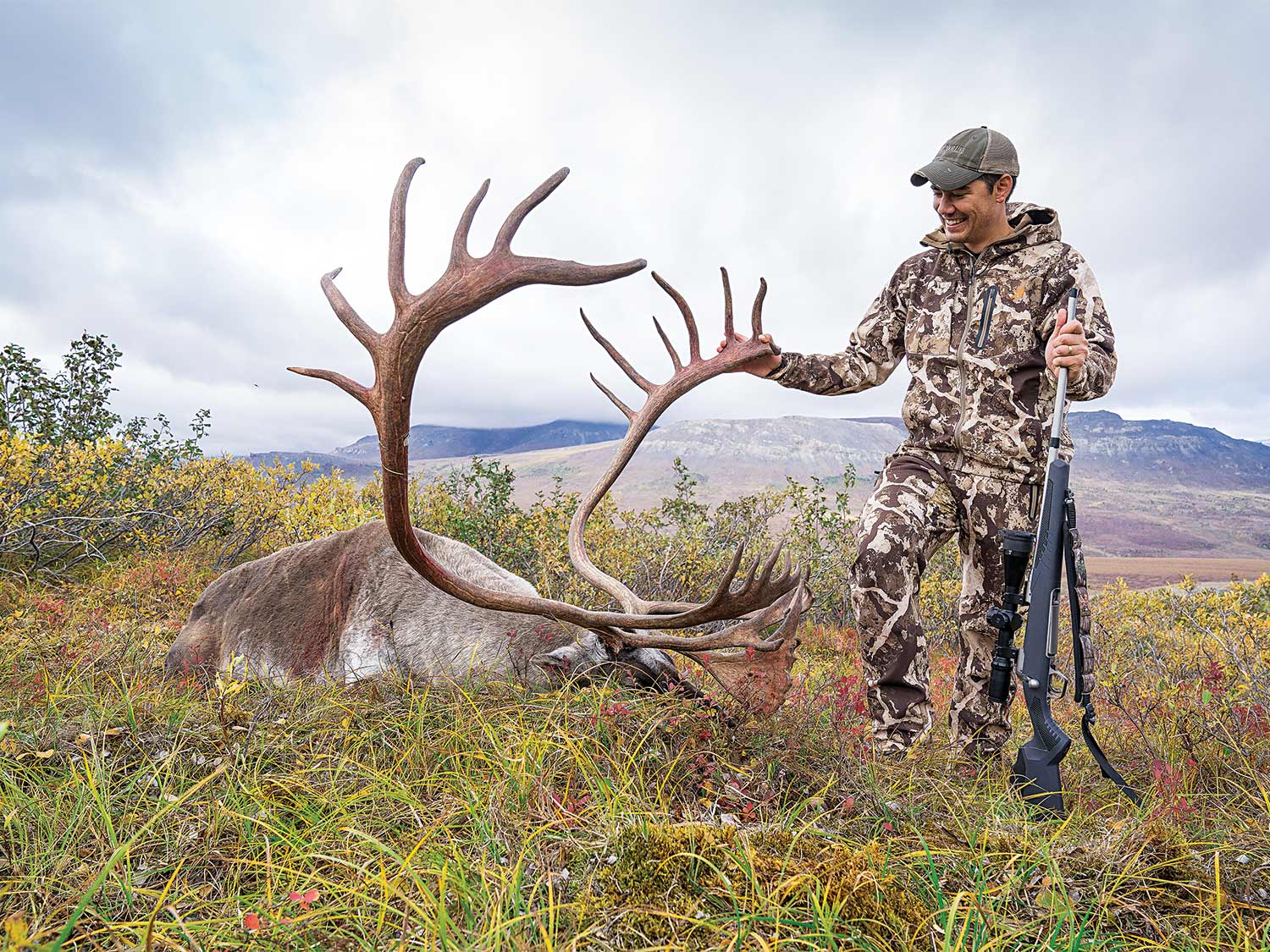
More than likely, hunters will still be arguing about the superiority of both of these cartridges for another 60 years. The reality being that they dang near ballistically mirror each other given the same weighted bullet. The one advantage that the .300 Win Mag has, lies in its ability to fire much heavier projectiles and subsequently generate an impressive amount of down-range energy with those heavier bullets. On the flip side, the 7mm Rem Mag still produces plenty of energy with noticeably less recoil.
Personally, I was going to hunt the giant bruins or moose of the North, I would lean toward the .300 Win Mag. However, for everything in the lower 48, I will continue to stick to my tried-and-true 7mm Rem Mag. Regardless of your choice, you cannot go wrong with either cartridge, so long as you are able to shoot them with consistent accuracy.
